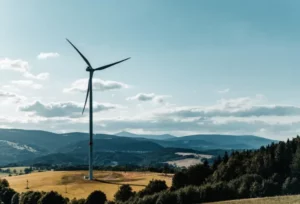Key Highlights
- Sustainability in Middle East is a pressing issue due to factors like water scarcity, food insecurity, and climate change threats.
- Countries in the region have set ambitious renewable energy targets, with plans to transition away from dependence on fossil fuels.
- Sustainable agriculture practices are being adopted to increase water-use efficiency and prevent soil degradation.
- Green buildings and smart cities are envisioned to build sustainable urban environments.
- Investments in mass transit and promotion of electric vehicles aim to ensure transport sustainability.
- Emissions reduction plans, carbon pricing schemes, and other climate change mitigation measures are being implemented.
- Stakeholder collaboration and innovation will be key to drive sustainability strategies.
The region is extremely vulnerable to climate change impacts, while also struggling with water scarcity and food security issues.
However, countries across the Middle East have started recognizing the urgent need to transition to sustainable development models.
Ambitious renewable energy targets are being set to tap into the region’s tremendous solar and wind energy potential.
Sustainable agriculture practices are being promoted to increase water-use efficiency and prevent soil degradation.
Major investments are being made into mass transit systems and electric vehicles.
Sustainability Challenges in the Middle East
With sustainability in Middle East, they face unique sustainability challenges related to its arid climate, high temperatures, and scarce water resources.
Key issues include:
Water Scarcity
The Middle East has some of the lowest rainfall rates globally, putting intense pressure on scarce water supplies.
Many countries rely heavily on desalination, an energy-intensive process, to meet water needs.
Water use far outpaces natural replenishment rates. Over-extraction of groundwater has caused dropping water tables and salinity intrusion.
Food Security
The extreme climate and water scarcity constrain food production capacity, forcing heavy food import reliance.
This leaves the region vulnerable to global food market shocks and price spikes.
Expanding populations and changing consumption patterns are increasing food demand rapidly. Boosting efficiency in agriculture water usage and expanding sustainable agriculture systems is crucial.
Climate Change Impacts
The Middle East is one of the most vulnerable regions to climate change, expected to see dramatic temperature rises, increased frequency of heatwaves, declining rainfall, and rising sea levels.
Higher temperatures will exacerbate water scarcity challenges, increase crop water requirements, and expand desertification. This threatens long-term food security.
More extreme weather events like floods, droughts, and dust storms are anticipated due to climate change. This brings risks of disaster-related displacement.
Renewable Energy Adoption: Sustainability in Middle East
The Middle East has abundant renewable energy sources, especially solar and wind power. Realizing the potential of renewables is key for energy security and sustainability in Middle East region.
Solar and Wind Targets
Many Middle Eastern countries have set ambitious targets for solar and wind energy installation.
Saudi Arabia aims to generate 50% of its electricity from renewables by 2030.
The UAE has set a target of 44% renewable energy by 2050. Solar and wind will account for a big share of these targets.
Massive investments are being made into renewable energy projects across the region.
The Mohammed Bin Rashid Al Maktoum Solar Park in Dubai is planned to have a capacity of 5,000 MW by 2030, making it the biggest single-site solar project globally.
Masdar City in Abu Dhabi is emerging as a hub for renewable energy innovation.
Transition from Fossil Fuels for Sustainability in Middle East
The Middle East depends heavily on oil and gas for its energy needs.
However, declining costs of solar and wind energy make them economically viable alternatives.
Many countries are diversifying their energy mix to become less reliant on fossil fuels.
Natural gas is seen as a transition fuel before a full-scale adoption of renewables. It has lower emissions compared to oil and coal.
Regional pipelines and LNG infrastructure are being built to increase gas export capacity.
Overall, renewable energy is expected to transform the energy landscape in the Middle East over the next few decades.
Ambitious policy targets, falling technology costs, and sustainability imperatives are driving this transition.
Oil economies will need to reorient themselves to the new energy future.
Sustainable Built Environments
As countries in the Middle East urbanize at a rapid pace, there are growing opportunities to develop more sustainable built environments.
Green Buildings
Green building design and construction are gaining momentum across the Middle East, especially in the UAE and Saudi Arabia.
Smart Cities
Many Middle East cities like Dubai, Abu Dhabi, and Riyadh have committed to becoming more sustainable through “smart city” initiatives.
Transportation Sustainability in the Middle East
Developing sustainable transportation infrastructure is crucial for the Middle East to reduce emissions and adapt to climate change impacts.
Transportation accounts for nearly a quarter of energy-related carbon dioxide emissions in the Middle East.
Public Transport
Expanding public transportation networks like metros, buses, and trains is essential for low-carbon mobility across Middle East cities.
Major public transit projects are underway in UAE and Saudi Arabia like Dubai Metro, Abu Dhabi Metro, and Riyadh Metro.
Electric Vehicles
Transitioning to electric vehicles powered by renewable energy is key to decarbonizing the transport sector.
UAE and Saudi have set ambitious adoption targets for electric vehicles up to 30% by 2030.
Climate Change Mitigation
The Middle East is one of the most vulnerable to climate change impacts such as extreme heat, droughts, and flooding.
Mitigating climate change by reducing greenhouse gas (GHG) emissions is crucial for the region.
Several Middle Eastern countries have set emissions reduction targets under the Paris Agreement.
For example:
- United Arab Emirates aims to increase the contribution of clean energy to 50% by 2050 and reduce the carbon footprint of power generation by 70%
- Saudi Arabia aims to reduce emissions by up to 130 million tons of CO2 equivalent annually by 2030
- Qatar aims to reduce GHG emissions by 25% by 2030 voluntarily
In Summary
The Middle East faces major sustainability challenges related to water scarcity, food security, climate change impacts, and an overreliance on fossil fuels.
However, countries in the region have started taking steps towards a more sustainable future.
Renewable energy adoption is gaining momentum, with ambitious solar and wind energy targets set by several countries.
Sustainable built environments are being developed through green buildings, LEED certifications, and smart cities leveraging technology to enhance quality of life.
Dubai has emerged as a regional leader in green buildings.
Overall, sustainability in the Middle East will require collaboration between government, businesses, and civil society.
The regulatory push for greater transparency and ESG disclosures will also accelerate the sustainability in Middle East economies.
By integrating this innovation and technology, the region can build a sustainable and resilient future.





